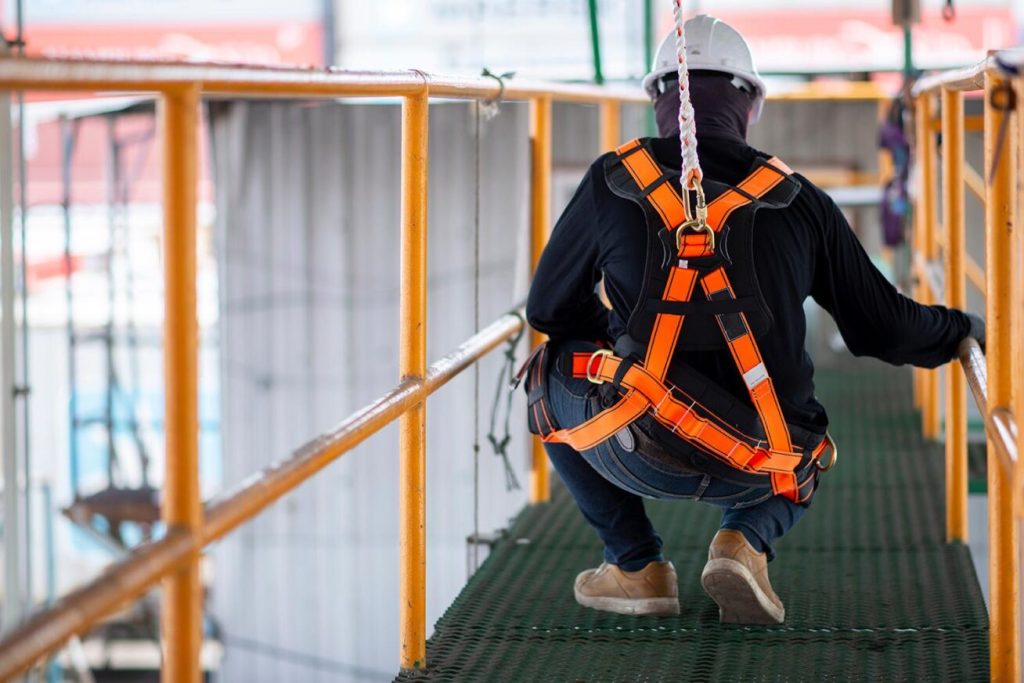How Technology Is Revolutionizing Fall Protection Systems
The world of workplace safety is changing fast, especially when it comes to keeping people safe from falls. Thanks to new technology like smart wearables, real-time monitoring, and even artificial intelligence, fall protection systems are getting smarter, quicker, and way more proactive. But what does all this mean for workers and companies? Let’s break it down!

Smart Wearables & Sensor Technology: Your Safety Sidekick
Imagine your work gear being as smart as your phone! That’s basically what’s happening with smart wearables and sensors:
– Real-Time Monitoring: Sensors built into clothing or harnesses constantly check things like your body position, movement, and even the environment around you.
– Early Hazard Detection: If you start to slip, lose balance, or show signs of fatigue, these smart gadgets can alert you—and your team—before you even realize there’s a problem.
– Seamless Integration: Most devices sync with safety platforms that collect and analyze all this data, giving you (and your employer) the bigger safety picture.
– Comfort & Durability: Forget bulky gear! These wearables are lightweight and tough enough for rough worksites.
In short, wearable tech is shifting fall protection Tampa from waiting for an accident to happen to preventing it in the first place.
Advanced Harness & Anchor Systems: Safety Meets Comfort
Let’s talk about the actual gear you wear and clip onto. These aren’t your old-school harnesses and anchors:
– Ergonomic Designs: Today’s harnesses are built for comfort—think better weight distribution, breathable materials, and quick on/off features.
– Modular Parts: Need to swap a part or adjust for a specific task? No problem.
– Stronger, Smarter Anchors: Anchors are now designed to handle different work environments and resist corrosion or wear.
– Effortless Integration: These systems work seamlessly with smart sensors and other safety tech.
Bottom line: Modern harnesses and anchors are all about making safety easier, more reliable, and less of a hassle.
Real-Time Monitoring & Instant Alerts: Always on Guard
Here’s where things really get high-tech:
– Continuous Oversight: Monitoring systems keep tabs on movements, harness tension, and environment 24/7.
– Instant Alerts: If something’s wrong—like a sudden fall or equipment issue—the system sends out an alert right away.
– Remote Communication: Supervisors and safety teams get notified instantly, wherever they are.
– Proactive Response: The faster the alert, the faster the help arrives, reducing the chance of serious injury.
So, it’s like having a digital safety net watching out for you all the time.
Data Analysis & Predictive Safety: Staying One Step Ahead
All those sensors and monitors generate a ton of data—and it’s not just sitting there!
– Spotting Patterns: By looking at what happened before past falls or near-misses, companies can find out what risky behaviors or conditions might cause problems in the future.
– Actionable Insights: Easy-to-understand charts and dashboards help safety teams see what’s working and what needs fixing.
– Proactive Prevention: The goal is to spot trouble before it happens, not just react after the fact.
Think of it as turning safety data into your workplace’s secret weapon against accidents.
Artificial Intelligence: The Smartest Safety Partner Yet
Finally, AI is taking things to the next level:
– Smarter Detection: AI reviews real-time data from sensors, cameras, and more, spotting risks that humans might miss.
– Machine Learning: The more info it gets, the smarter it becomes—constantly improving its ability to predict and prevent falls.
– Fewer False Alarms: Advanced algorithms help make sure that alerts are accurate and only go off when there’s real danger.
– Automated Interventions: In some cases, AI can even trigger safety mechanisms automatically.
With AI, fall protection is moving from “let’s fix it” to “let’s make sure it never happens.”
In a nutshell:
Technology is making fall protection more proactive, predictive, and user-friendly than ever. Whether you’re a worker on the front lines or a safety manager, these innovations mean better protection, faster response times, and a safer workplace for everyone.